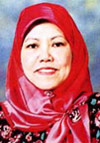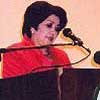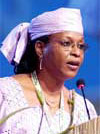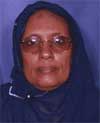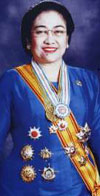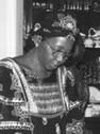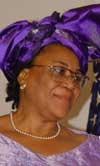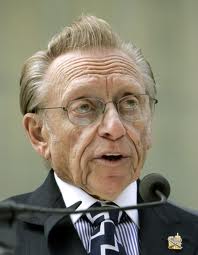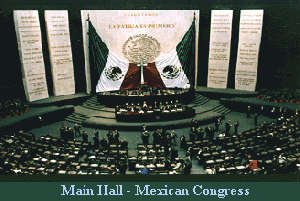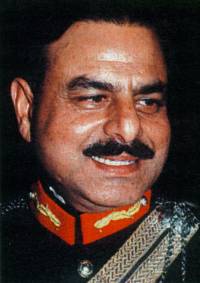9/11:Israel did it
When an event occurs that that fundamentally changes the dynamics of global geopolitics, there is one question above all others whose answer will most assuredly point to its perpetrators. That question is “Cui bono?”. If those so indicted are in addition found to have had both motive and means then, as they say in the US, it’s pretty much a slam-dunk.
And so it is with the events of 9/11.
Discounting the ‘Official narrative’ as the absurdity it so clearly is, there are just two organisations on the entire planet with the expertise, assets, access and political protection necessary to have both executed 9/11 and effected its cover-up to date (ie the means). Both are Intelligence Agencies – the CIA and Israel’s Mossad – but only one had a compelling motive – Mossad. That motive dovetailed perfectly with the Neocon PNAC agenda, with it’s explicitly stated need for “…a catastrophic and catalyzing event – like a new Pearl Harbor” [1] in order to mobilise US public opinion for already planned wars, the effects of which would be to destroy Israel’s enemies.
This article marshals evidence for the proposition that “Israel did it”.
Acknowledgments
The basic structure of this article, together with much of its content is taken from a May 2009 post on the Information Underground forum headed “Israel did 9/11 – All the proof in the world”. [2]
Control of World Trade Center Complex
The first step in preparations for the 9/11 attacks was to secure control of the World Trade Centre Complex itself. This was crucial because without complete control, the setting of explosive charges to bring down the towers would be next to impossible without serious risk of discovery.
Four key Zionist Network assets
- Larry Silverstein – Silverstein is a Jewish American businessman from New York. Larry obtained a 99 year lease on the entire world trade center complex on 24 July, 2001. [3] The towers were in fact close to worthless, being filled with asbestos, [4] yet Silverstein “felt a compelling urge to own them”. Silverstein had breakfast in “Windows on the World” restaurant (located in North Tower 107th Floor) every morning. [5] but was absent from this routine meeting on the morning of September the 11th. Silverstein’s two children, who also worked in the WTC, decided to take that day off as well. Larry Silverstein was paid a little over $4.5 Billion in insurance money as a result of the destruction of the WTC complex. [6] Silverstein was on personal friendship terms with Zionist media-magnate Rupert Murdoch, former Israeli president & infamous Zionist war criminal Ariel Sharon, as well as Israeli PM Benjamin Netanyahu. Silverstein was such good friends with Netanyahu that, according to the Israeli newspaper Haaretz he would speak with him on the phone every sunday. [7]
- Video – Where was Larry Silverstein on 9/11?
- Frank Lowy [8]– Lowy, a Czechoslovakia born Jew, was the owner of Westfield America, one of the biggest shopping mall conglomerates in the world. Lowy leased the shopping concourse area called the Mall at the World Trade Center, made up of approximately 427,000 square feet of retail floor space.
Frank Lowy has an interesting history. He was a member of the Golani Brigade, and fought in the Israeli war of independence. Before this he was a member of Hagganah, a Jewish terrorist organization. He spends three months of the year at his home in Israel and has been described by the Sydney Morning Herald as “a self-made man with a strong interest in the Holocaust and Israeli politics.” He funded and launched the Israeli Institute for National Strategy and Policy, which will “operate within the framework of Tel Aviv University” in Israel. He is also close friends with many top Israeli officials such as Ehud Olmert, Ariel Sharon, Bibi Netanyahu, and Ehud Barak. He was implicated in an Israeli Bank Scandal with Olmert. [9] Frank Lowy was not at the WTC on 9/11.
- Lewis Eisenberg – Eisenberg was the head of the Port Authority of New York and authorized the lease transfer to Silverstein and Lowy. [10] Eisenberg was a large contributor to the Bush-Cheney presidential campaign, as well as a partner in the Jewish bank Goldman-Sachs. Eisenberg has been both a member of the Planning Board of the United Jewish Appeal/United Jewish Federation pro-Israeli government pressure group in the U.S. [11]
- Ronald Lauder – Billionaire Estée Lauder Cosmetics magnate. He was the chairman of NY Governor George Pataki’s commission on privatization. He is the key individual who lobbied for the privatization of the WTC [12] — but he was also instrumental in the successful privatisation of the former Stewart Air Force Base. Oddly, the flight paths of flight 175 and flight 11 converged directly over this airport. Map
Lauder is active in the following organizations:
- Conference of Presidents of Major American Jewish Organizations
- Jewish National Fund
- World Jewish Congress
- American Jewish Joint Distribution Committee
- Anti-Defamation League
- Jewish Theological Seminary.
Lauder was elected president of the World Jewish Congress on 10 June, 2007.
Lauder founded a school for the Mossad in Herzliya, Israel called the Lauder School of Government Diplomacy and Strategy. He is arguably the key Sayan in the preparation of 9/11.
WTC Security In Zionist Hands
The second crucial aspect of control was that of security for the WTC complex. This was was required to provide unquestioned access to strategic areas of the buildings for the purposes of rigging explosives in the period prior to the attacks.
The contract to run security at the WTC was awarded to Kroll Associates after the 1993 WTC bombing. Kroll is otherwise known as “Wallstreet’s CIA”. The contract was awarded by The Port Authority of New York and $2.5 million was paid to them to revamp security at the complex. The owners of Kroll were two Zionist Jews named Jules & Jeremy Kroll.
The managing director of Kroll at the time was Jerome M. Hauer.
Hauer was also the person chosen to run Mayor Rudy Guiliani’s office of emergency management (OEM) from 1996 to 2000. He is the key individual that pushed for this office to be placed in Silverstein’s WTC Building 7 (ie the third tall building to collapse on 9/11).
Jerome Hauer is also Jewish and a staunch Zionist. Hauer’s mother, Rose Muscatine Hauer, is the retired Dean of the Beth Israel School of Nursing and the Honorary President of the New York Chapter of Hadassah, the Daughters of Zion movement that is one of the central Zionist organizations involved in the creation and support of the State of Israel.
Pre-Knowledge of Anthrax Mailings
It was Jerome Hauer who advised the White House staff to start taking “CIPRO” – the anti-biotic effective against Anthrax – a week prior to the Anthrax mailings attack[13]
Hauer is an ‘expert’ in Bio-Terrorism and was the one who was in charge of the NIH response to the anthrax attacks. His reactions to the anthrax mailings were, at best, slow and he took every opportunity to invoke “Osama Bin Laden” in the rhetoric he employed in his public utterances about them.
Who Killed John O’Neil?
Former special agent FBI, John O’Neil, who coincidentally had previously been tasked with investigating Bin Laden, was hired as head of security at the WTC complex by Jerome Hauer. Amazingly, O’Neil was killed on his FIRST day of work – 9/11.
It is important to note that O’Neil had quit his job at the FBI after his investigation into the U.S.S. Cole attack in Yemen had been obstructed & sabotaged by U.S ambassador to Yemen, Zionist Barbara Bodine. This is because the U.S.S. Cole attack was likely NOT carried out by Al Qaeda. The ship was hit by an Israeli cruise missile [14] to sway public opinion against the Arabs (Al Qaeda), as well as to demonize the Democrats who were not taking threats of terrorism seriously. The upshot was that a compliant George Bush Jr. was propelled into office in time for 9/11. All this was buried in complex bureaucratic obfuscation.
Airport Security In Israeli Hands
The third crucial aspect of control to be established was that of security at all of the airports from which the hijacking flights would originate. Passenger screening needed to be handled by controlled operatives so as to allow certain people and items (i.e. weapons) onto the planes.
The company that ran airport security at all three airports where the alleged hijackings originated was Huntsleigh USA a wholly owned subsidiary of ICTS International and owned by Ezra Harel and Menachem Atzmon – both Israeli Jews.
The company was run by “experts” in the security and intelligence field – Israeli intelligence that is. Most employees were ex- Shin Bet agents. It is not credible that this company, which ran security at both Boston Logan and Newark airports, was so slipshod as to allow 19 Arabs to board 4 different planes with box-cutters, mace, and even a gun.
Menachem Atzmon, former Likud treasurer in the 80’s, together with Ehud Olmert and other Likudniks was involved in an Israeli political scandal. He was convicted of fraud, falsifying documents, and breaching Party Funding Law.
ICTS was also in charge of airport security when the shoe bomber, Richard Reid boarded a plane with, allegedly, a shoe bomb. If Reid were really a terrorist rather than a Mossad Patsy, then ICTS would not have allowed him board the plane.
Another point indicating ICTS’s complicity is that a few hours before the Patriot Act was voted onto the statute book, it was edited to make foreign companies in charge of security on 9/11, immune to lawsuits. This effectively prevents American courts from demanding that ICTS provide testimony or hand over surveillance videos from the airports.
Umar Farouk Abdulmutallab (also referred to as “Underwear Bomber) is a Muslim Nigerian citizen and alleged terrorist who attempted to detonate plastic explosives hidden in his underwear on board of Northwest Airlines Flight 253, en route from Amsterdam to Detroit, Michigan, on Christmas Day December 25, 2009. Abdulmutallab boarded the US bound plane from Schiphol Airport in Amsterdam. Kurt Haskell, an attorney from Michigan, also boarded the same flight and he recalls seeing Abdulmutallab and another “sharp dressed” Indian looking man who helped Abdulmutallab board the flight. Haskell claims that Abdulmutallab boarded the flight without a passport. The security at the Schiphol Airport is also handled by the Israeli-owned ICTS International.
Prior Knowledge
Gomel Chesed Cemetery Incident
In October 2000, approximately 11 months before 9/11, a retired Israeli Defense Forces(IDF) officer, and veteran of the Yom Kippur War(1973), was collecting English Ivy Cuttings at the Gomel Chesed Cemetery located at McClellan and 245 Mount Olive Avenue, which is near the city lines of Elizabeth and Newark, New Jersey. The Gomel Chesed Cemetery is a Jewish cemetery.
The man overheard a conversation spoken in Hebrew, which drew his attention. He hid behind an 8-foot tall retaining wall and listened in to their conversation as they stood below. Shortly after a Lincoln town car approached the two people and the man in the backseat got out to greet them. After normal niceties were exchanged the third man said:
“The Americans will learn what it is to live with terrorists after the planes hit the twins in September.”
One of the men that had been leaning against the retaining wall expressed concerns that the upcoming presidential election (November 2000) might impact the plans. The man that arrived in the Town Car quelled the doubts by saying:
“Don’t worry, we have people in high places and no matter who gets elected, they will take care of everything.”
The observer who overheard this conversation related it to the FBI on numerous occasions only to be ignored each time. Nothing was done about it, and no investigation into the incident has ever taken place.
Israeli Citizens Get Tipped Off
Israeli instant messaging company, Odigo, admitted that two of its employees received instant messages warning of an impeding attack 2 hours prior to the first plane hitting. This warning was NOT passed on to the authorities.
- Odigo had a feature on its service that allowed the passing on of messages through a search feature based on nationality. Knowing these two particular Israelis were forewarned, it is possible – even likely – that they passed the message on to other Israelis. This is especially so considering that, out of the 4000 Israelis believed to have worked in and around the WTC and the Pentagon only FIVE died. 5/4000 Israelis. Statistically, with no forewarning about 10% (ie 400 of 4000) would have died; a toll as low as 200-300/4000 would not convincingly indicate foreknowledge. But only FIVE Israelis died and two of the five were aboard the allegedly hijacked flights; thus only three Israelis died in the WTC itself on 9/11 – An astonishing statistic!. NB – this applies to Israeli nationals, NOT American Jews. Many Jews died in the WTC on 9/11.
- Odigo has offices in New York, and in Herzliya, Israel. Herzliya also happens to be the home of the Mossad Headquarters.
- Odigo was later acquired by another Israeli company called Comverse. The CEO of Comverse was Kobi Alexander, “dual” Israeli-US citizen, with connections to Mossad. He has been charged on several counts of fraud.
Anomalous trading in the Securities Markets
There are about 30 separate reports of anomalous securities/derivatives dealings in currencies, precious metals, insurance companies and airlines, listed on the History Commons 9/11 Timeline, [15] that indicate foreknowledge of the attacks.
Other forewarnings
- On Sep 10, 2001, the Tokyo branch of Goldman Sachs warned its American employees to steer clear of American buildings.
- ZIM, an Israeli company, vacated its office (10,000 square feet) in the North WTC tower a week before 9/11, breaking its lease. 49% of this company is owned by the Israeli government. The lease ran till the end of 2001, and it cost the company $50,000 to break it early. Later, FBI agent Michael Dick, who was investigating Israeli spying before and after 9/11 and looking into the suspicious move, was removed from his duties by the then head of the Justice Department’s criminal division, Michael Chertoff, another Jew and staunch supporter of Zionism.
According to a non-official cover (NOC) CIA source who worked closely with Dick, the ‘Israeli movers’ moved in explosives when ZIM moved out. With ZIM Israel bailing out just in time, this left one Israeli company, Clearforest with 19 employees, in the WTC on 9/11. Of the five employees in the building all managed to escape.
Mossad connections
U.S. Army Study: On Mossad
In 2001, an elite US Army study center devised a plan for enforcing a major Israeli-Palestinian peace accord that would require about 20,000 well-armed troops stationed throughout Israel and a newly created Palestinian state. The report attempts to predict events in the first year of a peace-enforcement operation, and sees possible dangers for U.S. troops from both sides. Of the Mossad, the Israeli intelligence service, the US army officers say:“Wildcard. Ruthless and cunning. Has capability to target U.S. forces and make it look like a Palestinian/Arab act.”
The amazing thing about this is that this story was reported in the Washington Post on September 10, 2001. [16]
Israeli espionage around 9/11
Shortly before 9/11, over 140 Israelis had been arrested for suspected espionage. Some of them were posing as Art students. These suspects targeted or penetrated Military bases, DEA, FBI, Secret Service, ATF, U.S. Customs, IRS, INS, EPA, Interior Dept., U.S. Marshal’s Service, various US Attorneys Offices, Secret government offices Unlisted private homes of law enforcement/intelligence officers. Most of the suspects served in military intelligence, electronic surveillance intercept and or explosive ordinance units.
Dozens of Israelis were arrested in American malls kiosks selling toys, acting as a front for a spying operation.
60 detained suspects worked for the Israeli company AMDOCS which provides most directory assistance calls and most call records and billings services for the U.S. by virtue of its contracts with the 25 largest telephone companies in the U.S.
All alleged 9/11 hijackers had fake IDs. During a joint FBI-CIA operation against the alleged lead hijacker Mohammad Atta in Fort Lee, NJ in 2001, the operation was photographed by Israeli agents and thereby compromised. These Jews were arguably providing cover for the future patsy hijacker teams.
- Video – Israel spies on the USA part 1
- Video – Israel spies on the USA part 2
- Video – Israel spies on the USA part 3
- Video – Israel spies on the USA part 4
After 9/11 – More detentions of Israelis
Following 9/11, over 60 Israelis were detained either under the Patriot anti-Terrorism Act or for immigration violations. Some of them were active Israeli military personnel. A number of them failed polygraph examinations when questioned for surveillance activities against the US Some of them were found to have been spying on Arabs.
Five Dancing Israelis
Of the 90 or so detained Israelis there was a group of five Israelis, now widely known as the “dancing Israelis”, who were spotted in multiple locations filming, and celebrating the attacks.
The men were detained by NYPD. The police and FBI field agents became suspicious when they found maps of the city with certain places highlighted, box cutters (the same items that the hijackers allegedly used), $4,700 cash stuffed in a sock, and foreign passports. Police also told a New Jersey local paper, The Bergen Record, that bomb sniffing dogs were brought to the van and that they reacted as if they had smelled explosives.
Their names were Sivan & Paul Kurzberg, Yaron Schmuel, Oded Ellner & Omer Marmari.
“We are not your problem”?
According to ABC News 20/20, after these five Israelis were detained, the driver of the van – Sivan Kurzberg – told the officers: “We are Israeli. We are not your problem. Your problems are our problems. The Palestinians are the problem.”
They later appeared on an Israeli talk show and claimed that they were in NYC that morning “to document the event”. Witnesses reported they had set cameras PRIOR to the first plane strike, and were seen congratulating one another afterward. The five jubilant Israelis were also seen photographing one another. The FBI seized and developed their photos, one of which shows Sivan Kurzberg flicking a cigarette lighter in front of the smoldering ruins in an apparently celebratory gesture.
- Video – Five Dancing Israelis Arrested On 9/11
- Video – Cheering Israelis 1
- Video – Cheering Israelis 2
Truck Bomb Destined for George Washington Bridge
The Jerusalem Post later reported that a white van containing a bomb was stopped as it approached the George Washington Bridge, but the ethnicity of the suspects was not revealed. This what the Jerusalem Post reported on September 12, 2001:
American security services overnight stopped a car bomb on the George Washington Bridge. The van, packed with explosives, was stopped on an approach ramp to the bridge. Authorities suspect the terrorists intended to blow up the main crossing between New Jersey and New York, Army Radio reported.
- Video – 911 Explosive laden van 2-3 arrests
Mural Van
One of the more bizarre events of the day came in the form of a mysterious white van parked a few blocks away from the twin towers on 6th and King Street, that had a mural painted on the side that depicted a jetliner crashing into the twin towers and exploding.
This police audio transmission indicates that the two suspects in the van started to run away when the van was stopped and were apprehended shortly thereafter in some sort of struggle. The police recording also indicates that the mural van subjext to a controlled explosion following detainment of the two suspects.
- Video – 911 Mural Van NYPD Recording
Further corroboration of this incident came in the form of a reference in the February 2006 Norman Y. Mineta International Institute for Surface Transportation Policy Studies (MTI) report entitled: “Saving City Lifelines: Lessons Learned in the 9-11 Terrorist Attacks”. The relevant quote is as follows:
“There were continuing moments of alarm. A panel truck with a painting of a plane flying into the World Trade Center was stopped near the temporary command post. It proved to be rented to a group of ethnic Middle Eastern people who did not speak English. Fearing that it might be a truck bomb, the NYPD immediately evacuated the area, called out the bomb squad, and detained the occupants until a thorough search was made. The vehicle was found to be an innocent delivery truck.”
The report is a whitewash but nonetheless credible evidence of the existence of the mural-painted van. Apparently the people who wrote this didn’t find it odd that a delivery truck rented to “ethnic middle easterners” was painted up with a mural depicting the very events of the day! The police transmission speaks of an explosion yet this report mentions none. It safe to assume that the “ethnic middle easterners” referenced in the quote were not Arabs, because had they been, it would have been front page news. The incident was not mentioned in any official government reports. Official handling of the incident provides strong indication that these “ethnic middle easterners” were in fact Israelis.
Urban Moving Systems
All of the white vans belonged to the company “Urban Moving Systems” under the direction of Dominic Suter, an Israeli Spy who immediately fled to Israel after the attacks. It was confirmed by two former CIA officers that this Israeli company was a front operation for the Mossad. The two CIA sources noted that movers vans are a common intelligence cover. The Israelis were held in custody for 71 days before being quietly released.
- Video – Mossad Truck Bombs on Sept 11
Israeli Intelligence and P-tech
Ptech Software systems – computer control backdoor
Most computerized systems likely to have been involved in jet-fighter scrambling decisions on 9/11 were running Ptech software. A list of Ptech clients includes the FAA, N.A.T.O, United States Armed Forces, Congress, Dept. Of Energy, Dept. of Justice, FBI, Customs, the IRS, the Secret Service, and even the White House.
Zionist Jew Michael S. Goff was marketing manager at Ptech and also worked for Israeli database company Guardium (Director Amit Yoran); Guardium has been funded by Cedar Fund, Veritas Venture Partners, and StageOne, all Mossad funding outfits.
So, with Ptech, what we had was an American “sayan” (i.e. Jewish agent who works for the Mossad when needed), Michael S. Goff, with Mossad agents feeding him information and directing him while he worked with his Lebanese Muslim “partners” in Ptech.
Why would a young American lawyer working with a good law firm (Sedar & Chandler) in his home town suddenly leave the practice of law and work with a dodgy start-up software company owned and financed by a Lebanese and a Saudi? Goff’s family is a respected and well-known family in Worcester, Mass. He was established at a good law firm after leaving law school.
Under Goff, Ptech software – loaded with trapdoors and Trojan Horses – was sold and loaded onto the MOST sensitive computer systems. The same computer systems that failed miserably – or performed well, depending on your view – on 11 September 2001.
Goff’s father and grandfather were both accountants who belonged to Worcester’s “Commonwealth Lodge 600 of B’nai B’rith”. They were both 32nd Degree Masons.
MITRE corporation (computer software)
MITRE – major defense contracting organization headed by former Director of Central Intelligence James Schlesinger. It has been said that Schlesinger is a devout Lutheran, but his Wikipedia profile states he was born to Russian/Austrian Jewish parents and is therefore undoubtedly a Zionist.
Ptech, along with the MITRE corporation, occupied the basement of the FAA for two years prior to 9/11. Their specific job was to look at interoperability issues between the FAA, NORAD and the US Air Force during an emergency.
Precision guided plane?
The first plane to hit the WTC (North Tower) hit the computer room of Marsh & McClennan, which had recently acquired Kroll Associates, which was owned by son of AIG CEO Maurice Greenberg & Jules Kroll.
Rabbi Dov Zakheim and Systems Planning Corporation
Many researchers believe that the planes which struck the twin towers were precision guided by remote control. Although science fiction-sounding at first blush, remote control technology of airplanes has been around for decades. SPC Corporation provided the flight termination system and command transmitter system, the technology that allows planes to be remote controlled should the pilots be incapacitated or the plane hijacked.
Rabbi Dov Zakheim was the appointed Undersecretary of Defense and Comptroller from 2001 to 2004 under the George W. Bush administration. Zakheim is the man responsible for the disappearance of $2.6 TRILLION that went missing from the Pentagon books which was announced by Donald Rumsfeld on 10th September, 2001. The story was buried under 9/11’s rubble.
The specific section of the Pentagon that was “hit” or “blown up” contained the years budgetary information, as well as accountants, bookkeepers and budget analysts; many of whom died on 9/11.
In May 2001, when Zakheim served at the Pentagon, it was an SPS (his firm’s) subsidiary, Tridata Corporation, that oversaw the investigation of the first “terrorist” attack on the World Trade Center in 1993. This would have given them intimate knowledge of the security systems and structural blueprints of the buildings complex.
According to the SPC website, a recent customer at that time was Eglin AFB, located in Florida. Eglin is very near another Air Force base in Florida-MacDill AFB, where Dov Zakheim contracted to send at least 32 Boeing 767 aircraft, as part of the Boeing /Pentagon tanker lease agreement.
Considering his access to Boeing 767 tankers, remote control flight systems, and his published views in the PNAC document, it seems likely he is in fact a key figure in the 9/11 terrorist attacks
The US Military Knows Israel did it
This video is overlaid onto the soundtrack of a March 2010 interview by Gordon Duff with Dr Alan Zabrosky, Jewish former Director of Studies at the US army War College. Sabrosky makes a case, not just for a coverup of 9/11 but goes much further. He points out as do so many that the physics of the attack are unworkable. He, however, is one of the few to point to a conclusion many find obvious but few have the nerve to admit, that it would have been impossible to stage 9/11 without the full resources of both the CIA and Mossad and that 9/11 served the core interests of both agencies.
Sabrosky also makes a point involving media coverage of 9/11:
Finally, we need to take a hard look at why the mainstream media (MSM) have paid more attention to Sarah Palin’s wardrobe than they have to dissecting blatant falsehoods, discrepancies and inconsistencies in the US Government’s treatment of 9/11 and its aftermath.
Zionism and Treason
The inescapable point isn’t the 60,000 Americans killed or wounded in a war started out of treason or the world it threatens to destroy. Americans have been looking away from these glaring realities the way they looked away from Vietnam. Sabrosky leaves Israel and her American Jewish supporters who he sees as traitors with a warning:
If these Americans and those like them ever fully understand just how much of their suffering — and the suffering we have inflicted on others — is properly laid on the doorsteps of Israel and its advocates in America, they will sweep aside those in politics, the press and the pulpits alike whose lies and disloyalty brought this about and concealed it from them. They may well leave Israel looking like Carthage after the Romans finished with it. It will be Israel’s own great fault.
Do we take Sabrosky seriously because he is a Marine or a Jew? Do we wonder why the things he says reach so few? Is America in a shooting war where its biggest enemy sits behind it, killing its people, robbing it blind and whispering gently how much it is loved?
It would seem so.
Cover Up
9/11 Investigation in Zionist Hands
Immediately following the 11 September attacks, the Zionist network was methodically maneuvering behind the scenes to quash any legitimate investigation that might reveal what really happened that day. They made it their goal to control any and all angles of so called “investigation” so that they could quickly cover up any and all evidence pointing to Zionist involvement
All appointed chief judges were Zionist Jews:
- Alvin K. Hellerstein – a judge for the U.S. District Court for the Southern District of New York and has been involved in several high-profile 9/11 related cases including consolidated master case against three airlines, ICTS International NV and Pinkerton’s airport security firms, the World Trade Center owners, and Boeing Co., the aircraft manufacturer. Hellerstein is a dedicated Zionist and Israeli nationalist who has ties to the Jewish mafia dating back to 1956. Hellerstein’s wife is a former senior officer & current treasurer of AMIT. From its website it states: “Founded in 1925, AMIT is the world’s leading supporter of religious Zionist education and social services for Israel’s children and youth, nurturing and educating Israeli children to become productive, contributing members of society.”
- Michael B. Mukasey – This Orthodox Jewish judge oversaw the litigation between Larry Silverstein and insurance companies after 9/11. Silverstein was awarded billions. Mukasey prevented full inquiry into the Five Dancing Israelis incident who were arrested in connection with 9/11. He played a role in their release. He was later appointed attorney general by President Bush. He defended the patriot act, and he supports torture policies.
- Michael Chertoff – In charge of the Criminal Division in the Justice Department on 9/11. Essentially responsible for the 9/11 NON-investigation. He let hundreds of Israeli spies who were arrested prior to and on 9/11 go back home to Israel. He was also a prosecuting judge in the first terrorist attack on the WTC in 1993. Chertoff purportedly holds dual citizenship with the US and Israel. His family is one of the founding families of the state of Israel and his mother was one of the first ever agents of the Mossad, Israel’s spy agency. His father and uncle are ordained rabbis and teachers of the Talmud.
- Kenneth Feinberg – set up the victim’s compensation fund ($7 billion); controlled by a Zionist cabal, it managed to get 97% of the victims’ families to take money in exchange for dropping demands a legal investigation of 9/11.
- Sheila Birnbaum – Another key Zionist involved in the cover-up of 9/11 is Sheila Birnbaum of Skaddan, Arps law firm. Birnbaum was appointed ‘special mediator’ of the legal suits filed by the 3% of families who decided not to be bought off. Nothing of significance has happened with these claims since.
- Benjamin Chertoff – (cousin of Michael Chertoff) – Ben wrote the 9/11 hit piece in Popular Mechanics claiming to “debunk 9/11 conspiracy theories”. His use of ridiculous straw-man arguments largely discredits the piece though it is still widely quoted by defenders of ‘the official narrative’. He claims his relation to Michael Chertoff is “distant” but Chris Bollyn proves otherwise.
- Stephen Cauffman – Leader of NIST investigations which in total amount to a systematic coverup of the WTC 7 collapse. The NIST position remains that fire, together with minor damage caused by ‘ejected debris’ from the collapse of the North Tower situated a block away with WTC building 8 in between, brought down WTC building 7.
9/11 Commission: Zionist controlled
- Philip Zelikow (Dual Citizen US / Israel) – 9/11 Commission Gatekeeper
Zelikow was appointed the executive director of the 9/11 commission – the most powerful position of the committee. This Zionist Jew is responsible for concocting the contrived fiction that was presented as the 9/11 Commission Report – official narrative. The report contains hundreds of glaring anomalies, contradictions, omissions and downright falsehoods. It even manages to omit any reference at all to the collapse of Building 7 at 5:20 pm.
Initially Henry Kissenger was appointed as executive director but surrendered the post after enormous protest. This paved the way for Zionist operative Zelikow to take the helm. Zelikow has numerous conflicts of interest that clearly inhibited his ability to tell the truth to the American people about the 9/11 terror attacks.
Zelikow was a Bush Admin insider, having been on the transition team in early 2000. In 1989-91 Zelikow worked with Condoleezza Rice on the National Security Council for the Bush Sr. Administration. In 1995, Zelikow and Rice wrote a book together. From 1996-98 Zelikow is director of the Aspen Strategy Group which also included people such as Condoleezza Rice, Dick Cheney and Paul Wolfowitz as fellow members. After George W. Bush took office, Zelikow was named to a position on the President’s Foreign Intelligence Advisory Board [PFIAB], and worked on other Administration task forces and commissions. Zelikow position on the Commission made him its ‘Gatekeeper” enabling him to decide which topics would or would not be investigated. He was also secretly in contact with one of Bush’s close advisors – Karl Rove – throughout the gestation of the Commission Report.
Crime Scene Evidence Quickly Removed and Destroyed
Alan D. Ratner’s Metals Management and the SIMS group was made responsible for quickly scooping up the WTC steel/debris and shipping it off to Asian smelters. Alan Ratner is Jewish. Ratner merged with the SIMS group and the Hugo Neu corporation and they made a handsome profit. Ratner sold over 50,000 tons of crime scene evidence steel to a Chinese company at $120 per ton. Ratner had obtained it for $70 per ton. He not only destroyed evidence from one of the biggest crime scenes in history, he made a vast profit doing so. More research on the criminal destruction of crime scene evidence can be found here.
Zionist 9/11 Personalities
Zionist Jews in all the Right Positions!
It should be noted that Jews were extremely over-represented in the Bush Administration. An ethnic minority group which comprises just 2% of the American population had 42 of its people in top positions in Bush’s cabinet. This extreme over-representation of Zionist Jews illustrates the extent of their control of the American government at the time of 9/11. Absent involvement by many of the key Zionist personalities detailed here, 9/11 could not have happened.
- Rabbi Dov Zakheim – Co-author of the PNAC paper on rebuilding America’s defenses advocating the necessity of a Pearl Harbor-like incident to mobilize America. Served as Pentagon comptroller from May 4, 2001 to March 10, 2004. Two large sums of money disappeared from the Pentagon on his watch. In the beginning $2.3 trillion was reported missing by Donald Rumsfeld (September 10, 2001) and later Zakheim was unable to account for another trillion. Zakheim also had flights of American F-15s and F-16s sold as surplus to Israel at a fraction of their value.
- Michael Chertoff – Assistant attorney general for the criminal division of the Justice Department; later, Director of Homeland Security. His wife, Meryll Chertoff, was a regional director of the ADL. His mother was a flight attendant for El Al and thus had involvement with Mossad. His father and uncle are Rabbis.
- Richard Perle – Chairman of Pentagon’s Defense Policy Board. He was expelled from Sen. Henry Jackson’s office in the 1970s after the NSA caught him passing highly classified documents to Israel.
- Paul Wolfowitz – Was Deputy Defense Secretary and a member of the Defense Policy Board in the Pentagon.
- Douglas Feith – Headed reconstruction in Iraq. Effectively in command, with Wolfowitz, of the War Department on 9-11; Undersecretary of War for Policy. Fired from National Security Council in 1976 on suspicion of passing classified documents to Israel. “Dual Citizen” of US-Israel. Douglas Feith created the “Office of Special Plans” shortly after 9/11 which was where all of the fake intelligence accusing Iraq of developing WMD’s and having ties to Al Qaida came from.
- Eliot Abrams – Key National Security Council Advisor. Associated with criminal Zionist / Pro-Israel think-tanks: AEI, PNAC, CSP, and JINSA. Closely associated with other criminal Jews Perle, Feith, Wolfowtiz, and Bill Kristol. Convicted of lying to congress in the Iran/Contra Affair but was later given a pardon by Bush.
- Marc Grossman – Under Secretary for Political Affairs on 9-11; met with General Mahmoud Ahmad, head of Pakistan’s ISI and 9-11 financier, on or shortly after 9-11; “dual citizen” of US and Israel
- Ari Fleischer — White House spokesman for Bush on 9-11; Harlined Iraq WMD lies to the press; “dual citizen” of US and Israel; connected to the extremist group called the Chabad Lubavitch Hasidics
Who was on board flight 11?
Daniel Lewin: Lewin, an Israeli Jew, was confirmed to be a member of the special Israeli commando unit, the Sayeret Matkal, which specializes in “anti-hijack” takeovers and assassinations. The official narrative has it that Lewin got involved in a struggle with one of the alleged hijackers and ended up getting shot, which was later revised to being stabbed.
The suggestion here is not that Lewin was on a suicide mission and flew into the towers; rather that he landed the plane at Stewart Airport where it was swapped for a remote control drone. Stewart Airport was the “privatized” airport where the flight-paths of the alleged planes that hit the twin towers, oddly converged.
Bush Speech Writers Grossly Inflate Number of Israeli Casualties
On 20 September, 2001, in his address to the Joint Session of Congress following the 9/11 attacks, Bush grossly inflated the number of Israeli casualties in the attacks from 5 to 130.
Who was Bush’s Speechwriter?
- David Frum: This Zionist personality was Bush’s Speechwriter at the time and is the one responsible for inflating the number of Israeli dead to 26x the actual number. Why did he do this? Because he’s a Zionist and was attempting to garner sympathy for Israel and project them as a ‘great ally’ of the United States who were now ‘partners’ in this global fight against “terrorism”.
Frum is also the man behind the “Axis Of Evil” label.
He also co-authored a book with Zionist Richard Perle, entitled “An End To Evil: How To Win The War On Terror”, about the “Global War On Terror”; it defends the illegal and fraudulent invasion of Iraq and calls for regime change in Iran & Syria.
Mohammed Atta Leads Us Directly To Jewish Crime Network Doorstep
Less than one week before 9/11 several of the hijacker ‘patsies’, including Atta, boarded a Sun Cruz Casino Boat in Florida. Nobody knows why, and it has never been investigated.
- Jack Abramoff: owned these casino boats. A Zionist Jew, he entertained the Arab patsies aboard his yacht. Abramoff was a Bush Administration insider having been on the Transition Advisory Team assigned to the Department of the Interior in 2001.
Abramoff is a convicted criminal lobbyist who is a central figure in a plethora of political scandals, fraud, and other scams. He is currently serving a five year prison term for fraud, conspiracy, and tax evasion. He also had foreknowledge of the Zionist engineered War In Iraq.
Al Qaida = Mossad Playing Dress Up
A translation of ‘Al-Qaeda’ (not the only one) is ‘The Base,’. It also translates to ‘The Toilet.’ The Arabic word ‘Qa’ada’ means ‘to sit’ (on the toilet bowl). Arab homes have three kinds of toilets: ‘Hamam Franji’ or ‘Al-Qaeda’ or foreign toilet, ‘Hamam Arabi’ or Arab toilet, and a potty used for children called ‘Ma Qa’adia’ or ‘Little Qaeda.’ ‘Ana raicha Al Qaeda’ is a colloquial expression for ‘I’m going to the toilet.’
- Why would a terrorist group appear to revel in the name ‘The Toilet’?.
“The Base” is also the Arab colloquialism for a CIA maintained computerised database of foreign fighters prepared to harass both the Soviet Occupation of Afghanistan and support Muslim fighters in the former Yugoslavia. In other words it is a CIA construct and a very useful ongoing Zionist/US fiction.
Adam Yahiye Gadahn also known as Azzam the American is the so called Al Qaida spokesperson who releases videos tormenting the world with his anti-American rants. The FBI even have him on their most wanted terrorists list.
It turns out he is a Zionist Jew named Adam Pearlman, from California. Adam’s grandfather, Carl Pearlman, was a prominent surgeon and on the Board of Directors of the Anti-Defamation League! This is a script fit for a Hollywood movie. Spielberg to direct?
- Video – Fake Al Qaeda Actors EXPOSED! Adam Gadahn & Yousef al-Khattab
Ziad Jarrah, the Duped Lebanese Mossad Stooge, with Mohammed Atta
To the left is a still image from “laughing hijackers” video showing Ziad Jarrah(left), and Mohammed Atta(right), allegedly making their martyrdom video just before 9/11, all the while laughing hysterically about it!
Ziad Jarrah’s cousin, Ali Al Jarrah , was recently discovered by Lebanese authorities to have been a spy for Israel for 25 years!!
Netanyahu Openly Gleeful of 9/11 Terror Attacks
Apparently Israeli PM Benjamin Netanyahu is so confident in Zionist control and domination that he haphazardly stated publicly that the 9/11 terrorist attacks were “good” for US – Israeli relations, and would generate “immediate sympathy” for the Israeli cause of ethnically cleansing the Palestinians.
The Israeli newspaper Ma’ariv reported that Likud leader Benjamin Netanyahu told an audience at Bar Ilan:
“We are benefiting from one thing, and that is the attack on the Twin Towers and Pentagon, and the American struggle in Iraq,” Ma’ariv quoted the former prime minister as saying. He reportedly added that these events “swung American public opinion in our favor.”
Note: A YouTube video corroborating Netanyahu’s words was removed for what is described as “a terms of use violation”
The YouTube link was: http://www.youtube.com/watch?v=tZxPUIj4xxY
Of course Netanyahu’s nonchalantness about making such controversial statements in public is not that surprising considering how much control Zionist Jews have over the American media. The aftermath of 9/11 saw the Zionist-media unveil a relentless demonization campaign against Arabs stereotyping them as a bunch of fanatical plotting terrorists – a cause for celebration for Netanyahu and his brethren who look for any excuse to slaughter innocent Palestinians while confiscating their land.
Likely Architect of 9/11
Netanyahu is considered by many to be the architect of the 9/11, directing the Mossad/Shin Bet. He was Israeli PM at the time and has a long history of involvement in Israeli terrorism and politics. He’s been a prominent member of the Likud Government since 1993. The Likud Party is the literal successor of the Jewish terrorist organization known as the Irgun. He was the prime minister to whom the ACB Doc was presented. Netanyahu wrote a book in the early 80’s called Terrorism: How the West Can Win. He founded the Jonathan Institute in the late 1970’s to study (and plan) terrorism. Egyptian Intellectual, Hassan Al Bana, has stated publicly that he thinks Netanyahu planned 9/11 with the Jews at the Jonathan Institute. Al Bana cites a book written by Netanyahu called Uprooting Terrorism which speaks of plans to attack the U.N., and the World Trade Center with small nuclear bombs.
Connected Events Lead to Israel
Zionist would-be terrorist incident at the Mexican Congress Building
As reported by La Vox De Atzlan, [17] two men posing as press photographers, but in reality Israeli Mossad agents, were arrested INSIDE the Mexican congress on October 10, 2001 armed with 9mm pistols, 9 grenades, explosives, three detonators, and 58 bullets, but were RELEASED from custody because of pressure from the Israeli embassy.
“We believe that the two Zionists terrorist were going to blow up the Mexican Congress. The second phase was to mobilize both the Mexican and US press to blame Osama bin Laden. Most likely then Mexico would declare war on Afghanistan as well, commit troops and all the oil it could spare to combat Islamic terrorism.”
The terrorists names were Salvador Guersson Smecke (retired Israeli IDF colonel), age 34, and Saur Ben Zvi, age 27.
These terrorists were released because of a very high level emergency meetings took place between Mexican Secretary of Foreign Relations Jorge Gutman, General Macedo de la Concha and an Ariel Sharon envoy who flew to Mexico City specially for that purpose.
Quotes From Prominent People
Former Italian President agrees, says Mossad did 9/11
Former Italian President Francesco Cossiga, who revealed the existence of Operation Gladio, has told Italy’s oldest and most widely read newspaper that the 9-11 terrorist attacks were run by the Mossad, and that this was common knowledge among global intelligence agencies. In what translates awkwardly into English, Cossiga told the newspaper Corriere della Sera:
“All the [intelligence services] of America and Europe know well that the disastrous attack has been planned and realized from the Mossad, with the aid of the Zionist world in order to put under accusation the Arabic countries and in order to induce the western powers to take part in Iraq [and] Afghanistan.”
Former Pakistani ISI Director Says it was Mossad
In an interview only a mere weeks after 9/11, Hamid Gul — former head of Pakistani intelligence (ISI) from 1987-1989 — tells Arnaud de Borchgrave, United Press International of who he thinks was behind the attacks. Here are a few excerpts from the transcript which can be read in full here:
De Borchgrave: So who did Black Sept. 11?
Gul: Mossad and its accomplices.The U.S. spends $40 billion a year on its 11 intelligence agencies. That’s $400 billion in 10 years. Yet the Bush Administration says it was taken by surprise. I don’t believe it. Within 10 minutes of the second twin tower being hit in the World Trade Center CNN said Osama bin Laden had done it. That was a planned piece of disinformation by the real perpetrators. It created an instant mindset and put public opinion into a trance, which prevented even intelligent people from thinking for themselves.
See Also
- File:Synthetic Terror.pdf – 9/11 Synthetic Terror: Made in USA by Webster Griffin Tarpley. A must-read in the quest to understand how False Flag attacks are planned and executed and the Deep State interests they serve.
- File:Solving 9-11.pdf – Solving 9/11:The deception that changed the world by Christopher Bollyn. May 2011.
- File:September 11 Commission Report.pdf – A December 2008, anonymously authored, 280 page Ebook that elaborates on many of the people, organisations, connections and events outlined in this article
References
- ↑ Rebuilding America’s Defences. PNAC September 2000
- ↑ The Information Underground – The original source on which much of this article is constructed
- ↑ Wikipedia – Silverstein
- ↑ WTC Towers Asbestos Problem – 911 Research
- ↑ Silverstein breakfasting routine – Manhattan Institute web site
- ↑ WTC Insure War is over – New York Times 24 May 2007
- ↑ Silverstein – Netanyahu close friends Haaretz
- ↑ Frank Lowy – Wikipedia page
- ↑ Lowy Implicated in Israeli Bank Scandal – ABC Net 25 October 2006
- ↑ World Trade Center Deal Remains in Doubt – New York Times 17 March 2001
- ↑ The Republican Jewish Coalition and the pro-Israel Lobby – Electronic Intifada 21 February 2005
- ↑ Port Authority Press Release 101 – 2001 – Para 9.
- ↑ Jerome Hauer Cipro advice to White House
- ↑ Clearing the baffles for 9/11 – para 39 Truthseeker 3 October 2005
- ↑ Complete 911 Timeline – Insider Trading and Other Foreknowledge]
- ↑ Document:U.S. troops would enforce peace under Army study
- ↑ Document:Zionist Terrorists Released by Mexican Attorney General La Vox de Azlan 15 October 2001













































